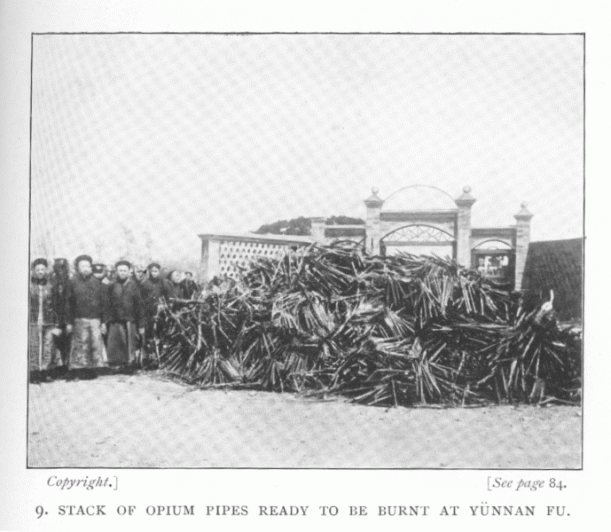Bouncing back from a brief hiatus in which I was too want for energy to post anything, I am pleased to present these stunning photographs of opium smoking in post-war China (Second World War). These photos were taken between 1945 and 1946 by George Lacks, who served in the Pacific theatre as a war correspondent on behalf of LIFE magazine. I recommend the collection to anyone interested in the culture of post-war China, the collection spanning from more documentary military photography to startling portraiture. His photos of Chinese brothels are especially captivating, however my true interest rests in his opium den photographs.
These photographs represent precious, beautifully composed depictions of the twilight of opium use in China proper, captured in the brief period between the end of the Second World War and the effective conclusion of opium smoking in China brought about by the Cultural Revolution. This was a period in which the opium trade flourished, despite a significant degree of downward moral outrage in the dying days of the Qing dynasty. The opium trade in post-war China, unbeknownst to all, would see its final days within the next 25 years, after nearly 400 years of cultural and economic envelopment.
Used to feed the coffers of the Chinese Nationalists as they struggled to quell the Communist rebellion, opium had little place in Mao’s China. Why is that, however? Opium had turned profits for the Chinese Nationalists, for the French in Southeast Asia, for the Japanese, for the British, why could it not be a source of profit for the Communists? Better yet, opium smoking represented something almost distinctly Chinese and is one of the few institutions which so brazenly bridged classes. Why did Mao’s cultural revolution push so heavily for the eradication of opium, long before the drug wars of today?
If the objective of the Cultural Revolution was to reinvent China’s social and cultural imaginary in line with Mao’s own interpretation of Marxist-Leninist thought, Mao had to reconfigure, reframe, and, ultimately, physically eradicate the memory of China’s cultural heritage. Here, Maoism, for all of its rhetorical fancy, demonstrates a profound cynicism towards the central elements of a Marxist conceptualization of history: dialectical materialism and historical materialism. Certainly, Lenin was no textbook Marxist, spurring on the revolution where the Marxist orthodoxy held that capitalism in Russia needed to succumb to its implicit contradictions for communism to be possible. This notion, that communism represented the eschatological conclusion of a historical process of which capitalism was an essential component, is a key facet of the historical materialist understanding of history: the argument that historical change is driven by struggle between the productive (economic) relations of society and that historical societies can be understood by analyzing these relations (Greek slave states, feudal serfdom, etc).
Dialectical materialism, the philosophical foundation of historical materialism, complicates this simple structure. Marx describes his idea of dialectical materialism as an inversion of Hegel’s objective idealism. It is Engels, Marx’s friend and coauthor, who first put forward the concept of dialectical materialism as it is generally understood in Marx’s Das Kapital: Historical societies pass through phases, like physical states of matter; the foundation of particular human thoughts and behaviour is derived from the physical relations of their world; contradiction is an implicit quality of all things; and the negation of the negation is a higher synthesis. One outcome of this is the belief that human subjectivity, lacking a fixed self-nature, is shaped by the material circumstances of their world, such that the citizens of a socialist nation will gradually come to think and act more and more communally.

The Cultural Revolution is much more in keeping with the totalitarian thinking of German writers like Ernst Jünger, whose essay Total Mobilization advocated for a society which was culturally, economically, and administratively driven toward a specific sense of ideological meaning. In other totalitarian states one recognizes the anxiety felt by the regime in the face of social organization outside of those spaces demarcated by the state. In the Soviet Union, for example, racism was against party policy, yet they systemically persecuted the Jewish population by targeting their ability to organize as a community as well as a religion. Their concern, however, was not that Jewish people were meeting, but rather that people were meeting as Jewish people. Totalitarianism demands that every facet of the social and cultural life of its people takes place within a defined ideological space. Organized religion, non-governmental youth organizations, and social clubs are all regarded with suspicion, if not immediately suppressed, because they undermine the ideological cohesion of the regime. Therein lies the requirement of eradicating opium smoking in Communist China.
The Cultural Revolution demanded the eradication of opium culture in China at least in part because it was a remnant of Imperial society, however the only substantive threat it posed to Communist China was its entrenched social function. Cobblers, rickshaw drivers, rope makers, and leather tanners alike would freely mingle, participating in a social space which existed outside of the ideological state’s monolithic self-concept. Opium culture, which involves physical space, capital, social involvement, emotional investment, traditions, lore, art, and distinct practices, represented a threat to the totality of Chinese Communism by creating societal strongholds against singular ideological domination. These photos wondrously capture the dying days of this rich historical culture.
It should comes as a surprise to none that the preferred accouterments of the Imperial elite are, today, some of the fetishized commodities to have ever come out of China, undoubtedly aided by the Revolution’s inadvertently turning a vice and social pass time into something mysteriously forgotten and tantalizingly Oriental.




